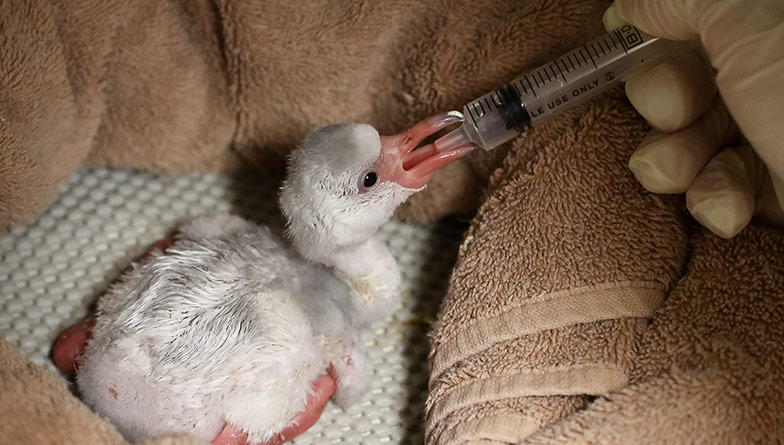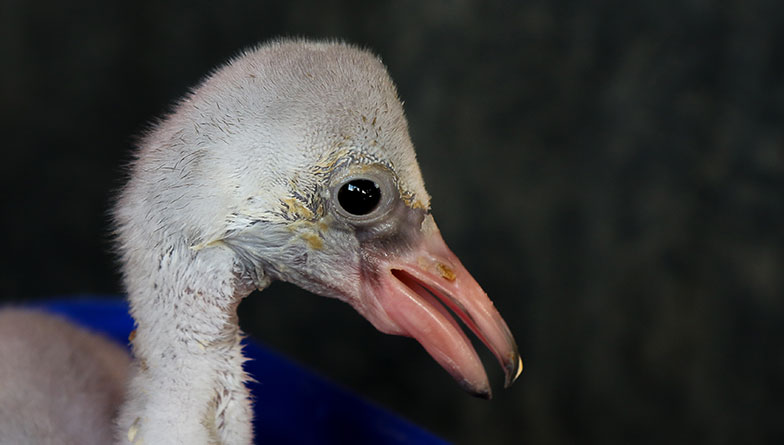For only the second time in its history, Auckland Zoo has welcomed a flamingo chick into the world. The chick hatched on 3 January.
In 2014, the zoo made headlines for being the first in Australasia to breed Greater flamingo chicks, as well as the first zoo in the world to successfully breed from an entirely hand-reared flock.
Former exotic birds team leader, now head of capital works and infrastructure, Michael Batty raised and transported Auckland Zoo’s flock of greater flamingos to New Zealand in 2001, from the Wildfowl & Wetlands Trust (WWT) in Slimbridge, England. Along with Pridelands team leader Nat Sullivan, he assisted with the hatching of the new chick.




